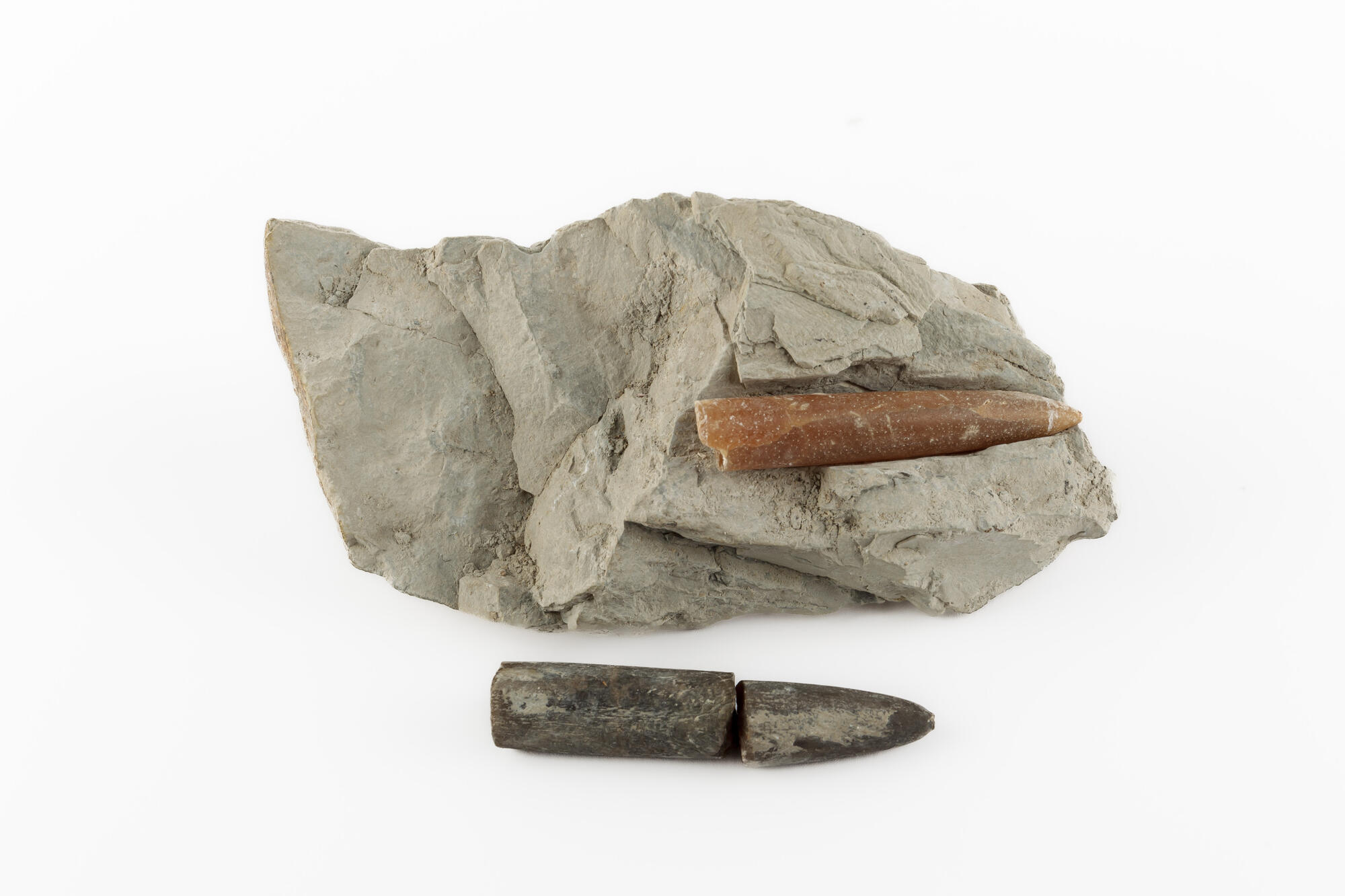Belemnites are extinct predatory cephalopods. They had a rostrum — a cylindrical shell in the form of an arrowhead. This rostrum is brown, hollow inside and round in cross section. It consists calcite layers of calcite, and the grooves are poorly distinguishable. It is enclosed in soft marl — an ancient sedimentary stone-like rock, resembling limestone in structure, which is found in the rocks in the Gelendzhik region.
Belemnites belong to the order of extinct cephalopods. There are at present about 2,500 known species. Belemnite rostra are best preserved as fossils. In ancient times, people believed that these fossils shaped as arrowheads or human fingers were signs from gods or hell. They are known as the “devil’s finger” with occasional imprints of blood vessels visible on their surface. The rostra of these mollusks received a number of other names: “thunder arrows”, “marks from a lightning strike”, or the “arrows of Perun”. The ancient Greeks believed that belemnites were celestial darts that gods flung down from the sky to punish those who disobeyed them. Belemnites take their name from the Greek word “belemnon” meaning dart or javeline.
Belemnites were numerous in the Jurassic and Cretaceous periods. They are that are related to modern octopuses and squids but there is a difference in the internal structure: unlike modern squids, belemnites have an internal shell. The belemnite rostrum served as a skeleton, and the outer part of the shell protruded outwards in the form of a cartilaginous outgrowth. The rostrum helped the belemnite to maintain stability while moving. It mainly consists of calcium carbonate. The chemical composition of the petrified rostra includes magnesium, flint, bromine, manganese, tin, iron, silver and even gold. If examined in detail, belemnites would reveal almost all the elements of the periodic table. Belemnites lived in the shallow sea on the territory of the Gelendzhik region.
Belemnites belong to the order of extinct cephalopods. There are at present about 2,500 known species. Belemnite rostra are best preserved as fossils. In ancient times, people believed that these fossils shaped as arrowheads or human fingers were signs from gods or hell. They are known as the “devil’s finger” with occasional imprints of blood vessels visible on their surface. The rostra of these mollusks received a number of other names: “thunder arrows”, “marks from a lightning strike”, or the “arrows of Perun”. The ancient Greeks believed that belemnites were celestial darts that gods flung down from the sky to punish those who disobeyed them. Belemnites take their name from the Greek word “belemnon” meaning dart or javeline.
Belemnites were numerous in the Jurassic and Cretaceous periods. They are that are related to modern octopuses and squids but there is a difference in the internal structure: unlike modern squids, belemnites have an internal shell. The belemnite rostrum served as a skeleton, and the outer part of the shell protruded outwards in the form of a cartilaginous outgrowth. The rostrum helped the belemnite to maintain stability while moving. It mainly consists of calcium carbonate. The chemical composition of the petrified rostra includes magnesium, flint, bromine, manganese, tin, iron, silver and even gold. If examined in detail, belemnites would reveal almost all the elements of the periodic table. Belemnites lived in the shallow sea on the territory of the Gelendzhik region.




